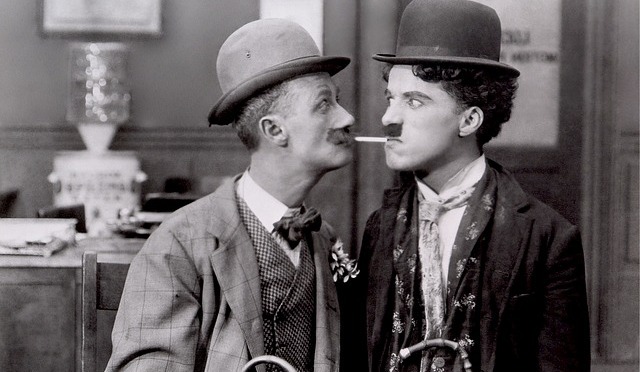You may have heard on the grapevine that Hilary Mantel’s Man-Booker-Prize-winning novel Wolf Hall is coming to our screens this month – a perfect antidote to the freezing January temperatures. The historical novel follows the rise of the ambitious and measured Thomas Cromwell in the court of Henry VIII. With the cast to include Damian Lewis as the fair-faced Henry VIII the production is an ambitious one and it got me thinking about the relationship between heritage and the film industry. In essence the film industry would not be what it is today without the preservation and conservation of world heritage.
Wolf Hall is just one of hundreds of productions that has chosen to use authentic historical locations to film. The series has used a whopping six National Trust properties (record breaking for a TV series) including Montacute House in Somerset, Chastleton House in Oxfordshire and Lacock Abbey in Wiltshire. As noted by Lucy Worsley, it would have been easier and cheaper to have filmed in a studio but this would have been at the sacrifice of historical authenticity. Indeed the producers of Wolf Hall have been so faithful to historical accuracy (granted there’ll be a few things to slip through the net – there always are!) that Catherine of Aragon’s skirt is woven with her family emblem – the pomegranate.
Heritage, from humble family homes to awe-inspiring monasteries, it would seem is vital if one is to create a true and authentic historical production. What would a Dickens dramatisation be without crumbling and creepy houses? Or an Austen dramatisation without the grandeur of Chatsworth or a regency home? For example, Clifton House in King’s Lynn, was used as the interior of King’s Bench debtors prison in the BBC’s 1999 production of David Copperfield. It was originally a merchant’s house and retains amazing historic interiors from the 13th to the 18th centuries. No Pinewood Studios, Warner Brothers or 20th Century Fox team could recreate this.
Or how about the BBC production of Jane Eyre starring Ruth Wilson and Toby Stephens? Haddon Hall features as Thornfield and what a Thornfield it makes. If you’ve ever visited the Tudor Manor you’ll know it is both grand and chilling. Set in the Derbyshire countryside it has something of the Bram Stoker about it, certainly a piece of heritage that harbours a wealth of dark secrets. It is this very feeling, this intangible atmosphere, that makes heritage so precious. A Hollywood studio cannot even begin to recreate the creaks in these corridors, the dark sultry corners or the stories of the past. Heritage is not just about places but it is about memories and as a result it is wholly irreplaceable.
According to Statista the film industry is worth over $550 billion a year. When historic filming locations, from stately homes to historic parks, are featured in films it is inevitable that the local economy will benefit from a piece of this delicious pie. Take Harry Potter for example. Since using Alnwick Castle in Northumberland, as Hogwarts in the first two Harry Potter films, tourism has increased by 230% since 2011, pumping an extra £9 million into the local economy. This is huge. Despite current cuts, the preservation and conservation of heritage does in fact make economic sense.
Of course heritage is far too valuable to simply talk about it in economic terms. Additionally, one could argue that such tourism leads to the commercialisation of heritage. But I don’t agree. Let’s be honest, heritage needs money to survive and tourism provides this. Plus by using these places as filming locations you create buzz and excitement again, thus breathing new life into them. For example, Wollaton Hall in Nottingham has been frankly unloved by the city council for years. However, with Christopher Nolan recently using it as Wayne Manor in The Dark Knight Rises the tired country house has got a new lease on life. It’ll be interesting to see, for example, how visitor figures to Bletchley Park change after the recent The Imitation Game.
Whilst the relationship between the heritage and film industries is a complex one that throws up a wealth of questions, the relationship is mutually beneficial. Whilst the film industry breathes new life into old places and demonstrates the economic value of heritage, historic places and spaces add an authenticity and atmosphere to productions that is entirely unique and beyond recreation. Sort of a I’ll scratch your back, you scratch mine arrangement.
